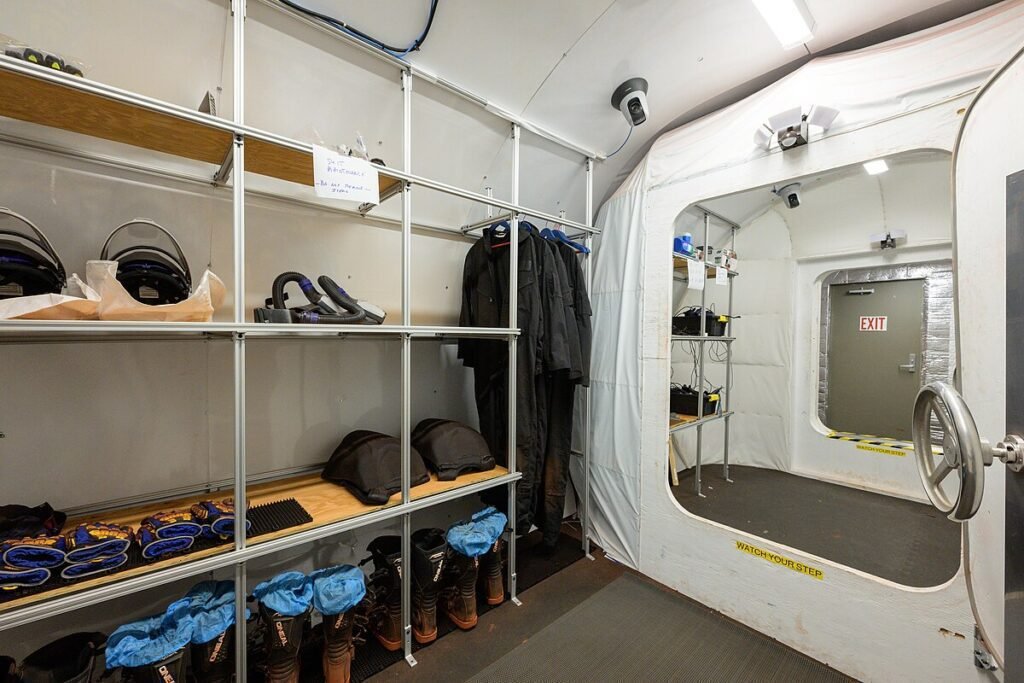In an unprecedented experiment, four NASA volunteers have successfully concluded a year-long mission simulating life on Mars. This incredible project was carried out in a Texas 3D-printed habitat with the goal of being ready for more human trips to the Red Planet. The Crew Health and Performance Exploration Analog (CHAPEA) mission evaluated human adaptability and endurance in a controlled environment that was modeled after Martian circumstances.
The Genesis of the Mars Simulation Mission
The CHAPEA mission started on 25th June, 2023. This initiative was part of NASA’s broader efforts to prepare astronauts for the long-duration space flights necessary for Mars exploration. The volunteers—Nathan Jones, Ross Brockwell, Kelly Haston, and Anca Selariu—were chosen due of their resilience and variety of skill sets.
Life Inside Mars Dune Alpha
A Glimpse into the Habitat
The Mars Dune Alpha is a 1,700 square foot 3D-printed structure designed to replicate Martian living conditions. Its isolated nature was crucial for the simulation, providing the volunteers with a realistic sense of what future astronauts might experience.

Daily Routines and Responsibilities
The volunteers’ daily lives were meticulously planned to mirror potential Martian missions. They engaged in tasks such as “Marswalks,” growing their own food, and maintaining equipment. These activities were essential in understanding the logistics and psychological impact of long-term space missions.
The Challenges of Mars Simulation
Communication Delays and Isolation
One of the critical aspects of the simulation was the implementation of communication delays with Earth, mimicking the time it would take for messages to travel between planets. This added an extra layer of realism and challenge, emphasizing the need for self-sufficiency and problem-solving skills.
Resource Management
Living on limited resources was another major obstacle. Water, food, and energy were among the commodities that the crew had to handle with care. This mission-related feature offered insightful information about how to best allocate resources for upcoming Mars missions.
Psychological and Physical Impact on Volunteers
Mental Health Considerations
The effects of confinement and isolation on mental health can be severe. The volunteers underwent regular psychological assessments to monitor their well-being. The development of support systems for astronauts on extended trips depends on these evaluations.
Physical Health and Fitness
Maintaining physical health was also a priority. The crew engaged in regular exercise to counteract the effects of prolonged immobility and limited physical space. They also monitored their nutritional intake, relying on the vegetables they grew themselves.
Insights and Learnings from the Mission
Agricultural Successes
Growing food in a controlled environment was one of the mission’s highlights. The crew successfully cultivated tomatoes, peppers, and leafy greens, providing fresh produce and enhancing their diet. This experiment offered valuable data on the feasibility of space agriculture.
Technological Advancements
The mission also tested various technologies, including the habitat’s 3D-printed structure and life-support systems. These technologies are pivotal in designing sustainable living conditions for future Mars missions.
Future Implications and NASA’s Roadmap
Preparing for the Moon and Beyond
NASA’s Artemis program aims to return humans to the Moon as a precursor to Mars exploration. The lessons learned from the CHAPEA mission are instrumental in planning these lunar missions, which will serve as a testing ground for Mars.
The Next Steps in Mars Exploration
The completion of this simulated mission marks a significant milestone in NASA’s journey to Mars. Future missions will build on these findings, refining strategies and technologies to ensure the success of manned Mars expeditions.
Conclusion
The accomplishment of the CHAPEA goal successfully is evidence of the inventiveness and resiliency of people. Future astronauts will be able to set foot on Mars thanks to the experiences and knowledge obtained from this simulation as NASA pushes the boundaries of space exploration. Through their unwavering commitment and persistence, Kelly Haston, Anca Selariu, Ross Brockwell, and Nathan Jones have advanced our goal of realizing interplanetary travel.


